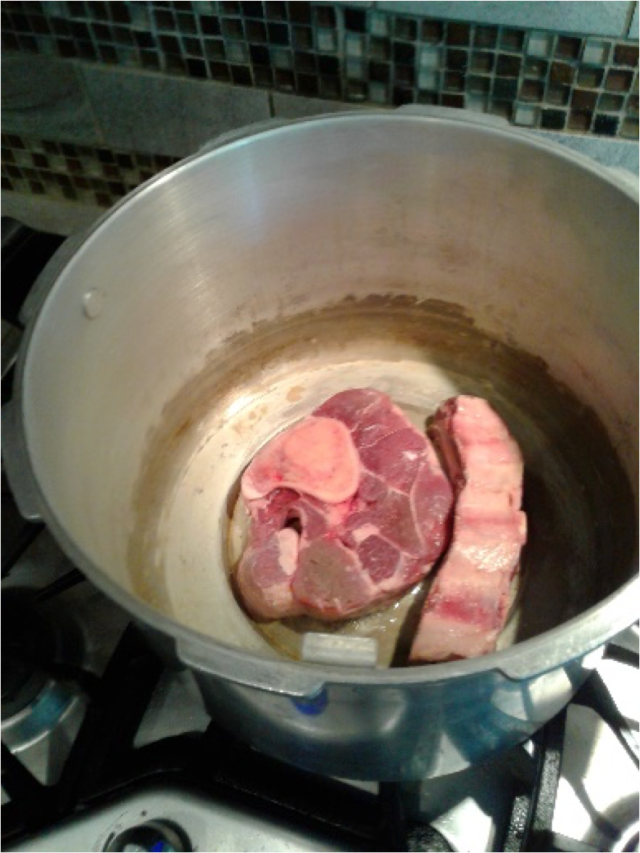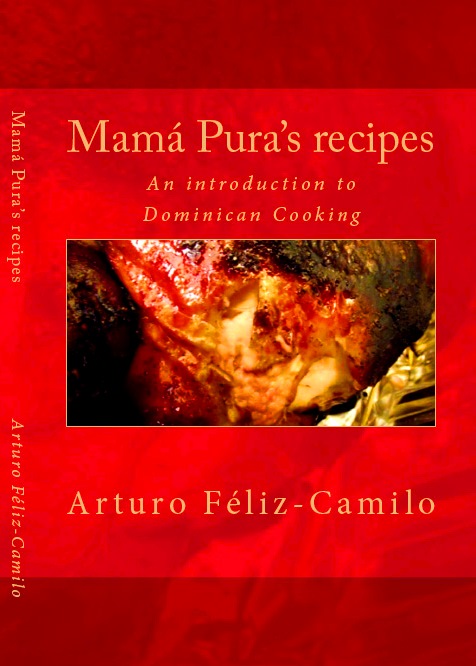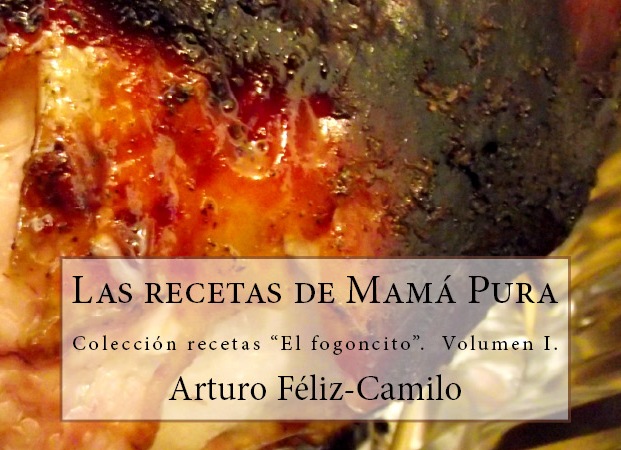Last summer I had the chance of sharing at the AP US History Reading in Tampa with Mr. Rumley, an amazingly experienced US History teacher and a great fan of cooking. We talked a lot about food and I eventually shared my Sancocho recipe with him. Here’s his very interesting article. I’m very proud of his amazing job at interpreting sancocho.
A Yankee Cooks Dominican Sancocho Stew
By Michael Rumley
I had the good fortune to attend the 2017 AP US History reading in Tampa Florida in early June.
One of the neat things is meeting other history teachers from around the nation and getting to know a little bit about them. My fortune only got better when I was seated next to Arturo Feliz-Camilo who hails from the Dominican Republic. I learned so much over the week about the history and culture of the DR as it is called. But, especially about the food. Arturo and I share a common love of cooking and how lucky was I to have the ear of one of the authorities on Dominican food.
It seems he has written cookbooks on Dominican cuisine, maintains a food blog, and has put on cooking demonstrations in front of crowds. My expertise centers around BBQ contests, food preservation, and preparing tasty food for family and friends. Right now, my cooking was being influenced by Asian ingredients but I must say that Arturo’s recipe with Latin American tubers may change that.
It all started when I asked him what would be the DR’s signature national dish. “Sancocho” was the reply. Back at the hotel a little research on the web on Sancocho revealed that just about all Latin American countries has their own version of Sancocho. Many countries prepare it as a soup but the Dominicans like it as a stew. The remaining part of the week was perfecting the recipe. Arturo was concerned that Central California would not have many of the ingredients found in the DR. However, I told him that we have a sizable Latin population and several Latin American super grocery stores. I could find just about all the ingredients in the recipe at Vallarta’s Supermarket in Fresno. Arturo said to take pictures and let him know how it turned out. So here is a Yankee cooking Sancocho Dominican Stew.
Step 1: To thicken the stew Arturo recommended using mashed Butternut Squash as he did not think I would be able to find a “cooking” pumpkin. I proved him wrong as it turns out. Vallarta’s had several varieties so I went out on a limb and picked out a Kabocha pumpkin. Delish! As it turns out I used both! I admit I bought the squash already cut up and steamed it for 10 minutes and then mashed it and then set it aside to be added at the end. It added a nice orange color to the stew.
Step 2 Making the Broth: Pictured below are the aromatics that I used in making the broth:
Onions, garlic, celery, chicken bouillon, oregano, cilantro, (I added 4 sprigs of thyme just because I like the flavor), and an Anaheim chili pepper. Arturo’s recipe called for a Cubanelle pepper but they are not in season yet so I made an executive decision. Also, note that I tied up the cilantro and thyme with some kitchen twine to make removal easier.
The heart of the broth is the beef. After much discussion, we decided that about a pound of the beef shank or beef spare rib would make the most flavorful broth especially since I would be using a pressure cooker. I used both! They both have fat and bones! I browned the meat in a teaspoon oil to “release the flavonoids” via the Maillard Reaction, added the aromatics, water, and set the pressure cooker to 10 pounds of pressure. Fifteen minutes later I had created a delicious broth! After everything cooled down I could remove the meat (It was falling off the bone) and pour the broth into the soup pot, through a strainer to remove the solids. I checked and added about 1 teaspoon sea salt. I let the broth come up to a simmer and let it reduce a bit while I prepared the rest of the ingredients.
Step 3 Preparing the tubers, roots, and pumpkin: Below is a picture of the tubers I used. I must admit I had never tasted any of these before. Arturo calls them “viveres.” The pumpkin required a little additional work. Of note: The cassava or yucca root is listed as one of the five super foods that reduce arthritic pain. It will now be a staple in our household. The “green banana” was not quite as green as I think Arturo would want. Vallarta’s only carries the white yautia. There was supposed to be a yellow one.
To prepare the pumpkin you have to cut it in half, then cut it into quarters and then into eighths. Put it into the microwave on high for 5 minutes. You will be then able to cut it into chunks removing the tough outer skin.
Step 4 Preparing the meat: Vallarta’s has a wide variety of “chorizo.” They have a whole section devoted to the different sausages that are used in Latin American cooking. In the Fresno area because of the heavy Mexican influence chorizo means a loose pork sausage that is taken out of its casing, fried, and then mixed into other dishes. Longanizza sausage is usually cut into chunks and is eaten with the casing on. To quick brown, the meat Arturo recommended the Cibao trick of using a caramel. Cibao I have learned is a region of the DR in the north. Basically, you brown the meat in oil in which sugar has been added. This will give the meat a nice brown hue.
Pictured are the chicken thighs, sausage, smoked pork chops. Also, the beef shank and sparerib that were previously cooked in the broth
Step 5 Everyone into the Pool: The last step is to add the browned meat and the “viveres” to the broth. I made the command decision to add the Butternut Squash pulp and it made it the right consistency. Not too thick and not to thin. Bring up to a simmer and cook for 25 to 30 minutes. Top off each bowl with some cilantro and a tablespoon of sour orange juice. Now it’s time to grab a cerveza and enjoy!
Sancocho Dominican Stew
Ingredients
- 2 bones in, skin on Chicken thighs (bone in) cut into quarters.
- 1 pound Beef Shank
- 1/2 pound bone-in short rib
- 2 links (1/2 pound) Longanizza sausage cut into ½ slices on the bias
- ½ pound smoked pork chop 1-inch cubes (can use Bacon)
- 1 medium butternut squash cut into 1-inch cubes, steamed and mashed
- 1 Kabocha pumpkin cut into 1-inch cubes
- 2 medium white onions cut in half skin removed
- 2 Cubanelle Peppers cut in half (Can use 1 Anaheim)
- 1 bunch cilantro + 4-6 stems thyme tied with kitchen twine
- 2 celery ribs with leaves left whole
- 6 cloves garlic peeled
- ½ teaspoon dried oregano
- 1 Plantain cut into 1-inch slices
- 1 pound Yucca, cut into 1 inch slices
- 1 lb white yautia cut into 1-inch cubes
- 2 green banana cut into 1-inch slices
- 1 chicken bouillon cube
- 1 Tablespoon sour orange juice per plate
- Salt for seasoning
Process
- Steam and mash the butternut squash and set aside in a bowl. You will use this as the thickener.
- Brown beef shank and short rib in the pressure cooker
- Add onions, celery, pepper, garlic cloves, bouillon cube, and oregano to pressure cooker. Add water to cover beef shank and ribs by 3 times. This turned out to be 3 and ½ liters.
- Pressure cook beef shank and ribs for 15 minutes at 10 pounds of pressure. Let cool and remove the meat to a plate. Remove the meat from the bones.
- Remove solids and pour broth through a strainer into the soup pot. Bring to a boil and reduce liquid to 3 liters.
- In a large sauté pan or Wok, create a Carmel by heating ¼ cup veg oil with 2 tablespoons sugar., When sugar bubbles, add chicken, pork chop, and sausage meat, stir-frying to coat and brown. Remove to a plate.
- Add beef, chicken, pork chop, sausage, plantain, cassava, bananas, Kabocha pumpkin and yautias to the soup pot. Bring to a boil and reduce heat to a simmer.
- Add squash pulp a spoonful at a time to liquid to thicken to your desired consistency. I ended up using all the squash pulp. Simmer for 25 minutes.
- Add 1 tablespoon sour orange juice to each bowl.














































